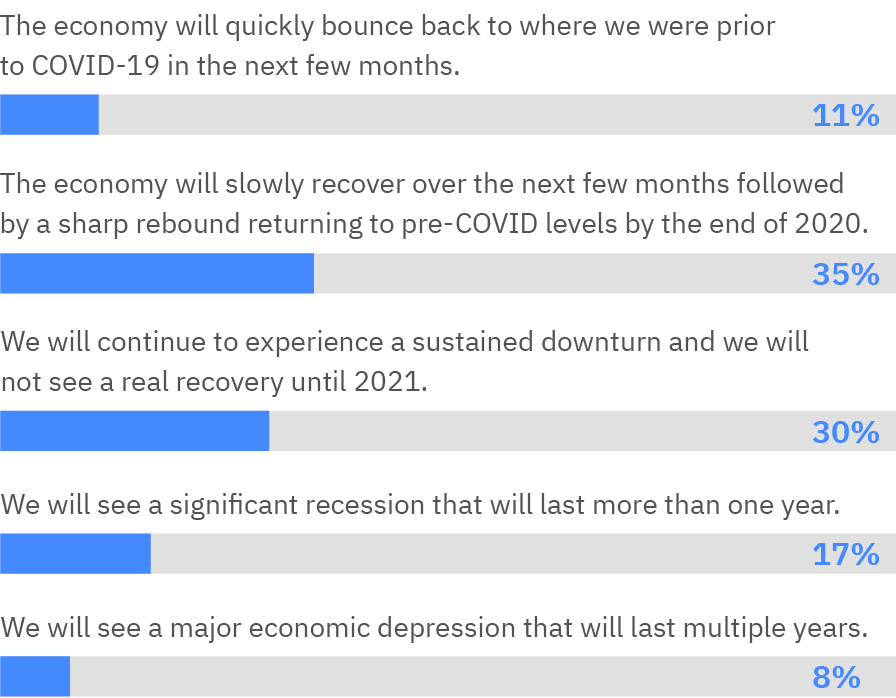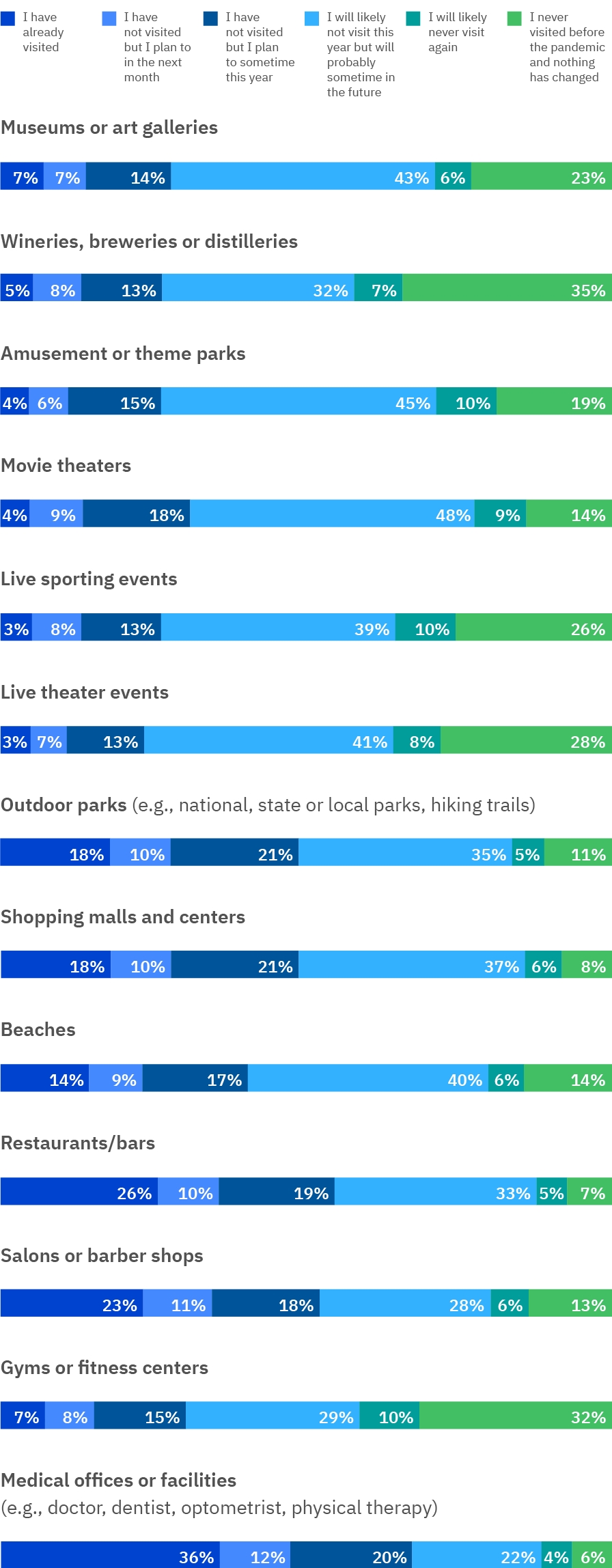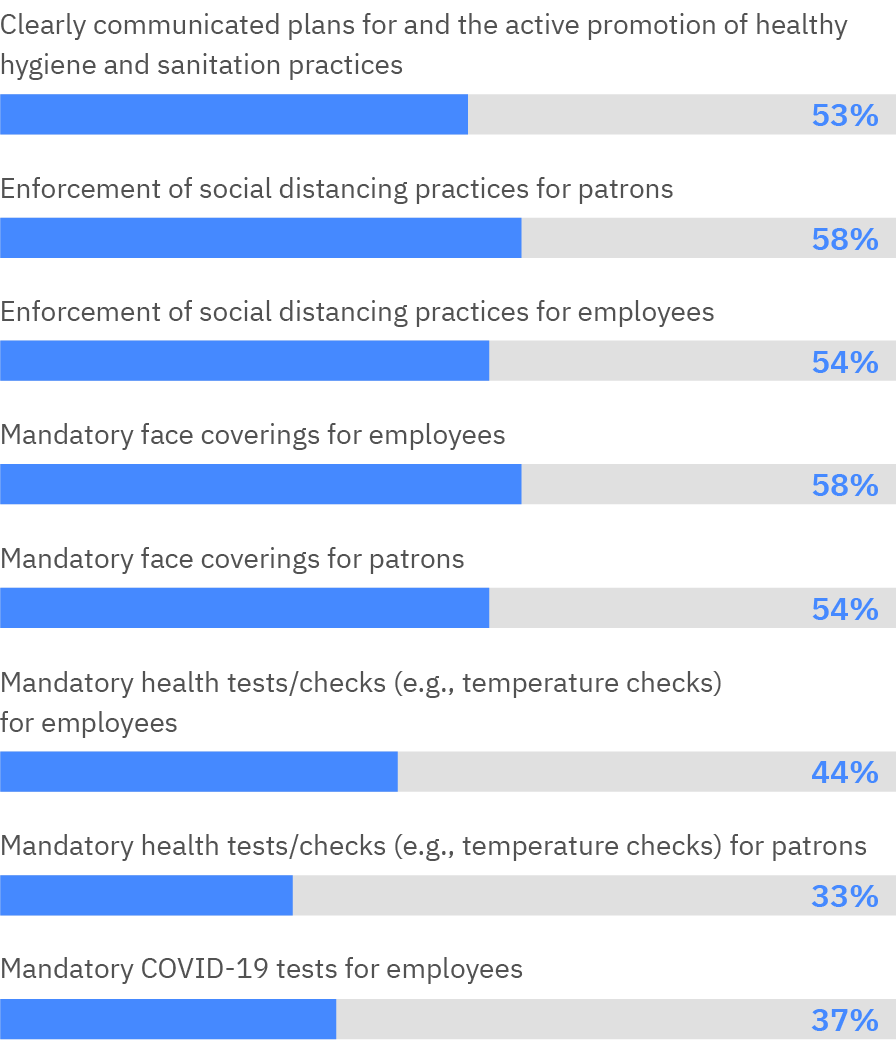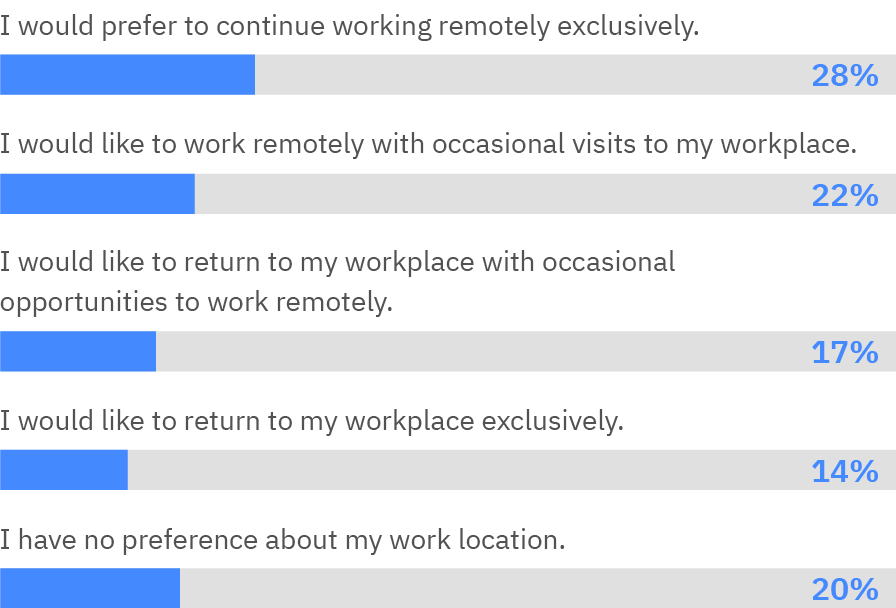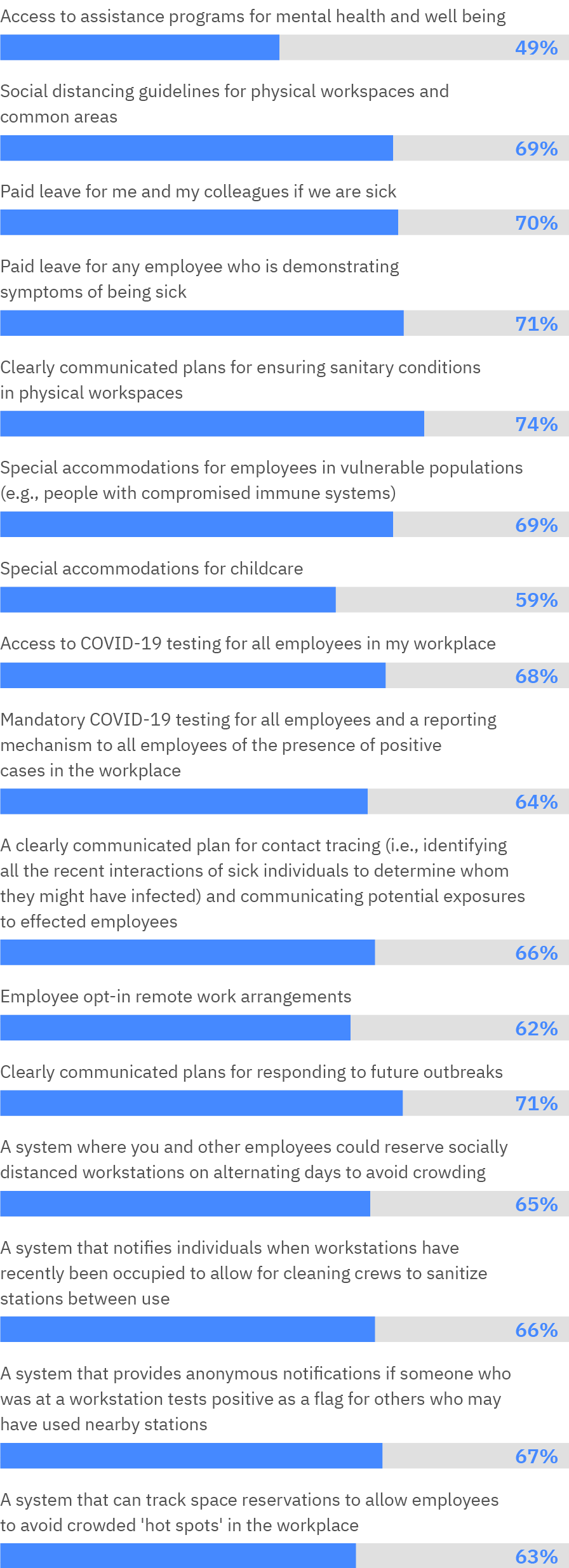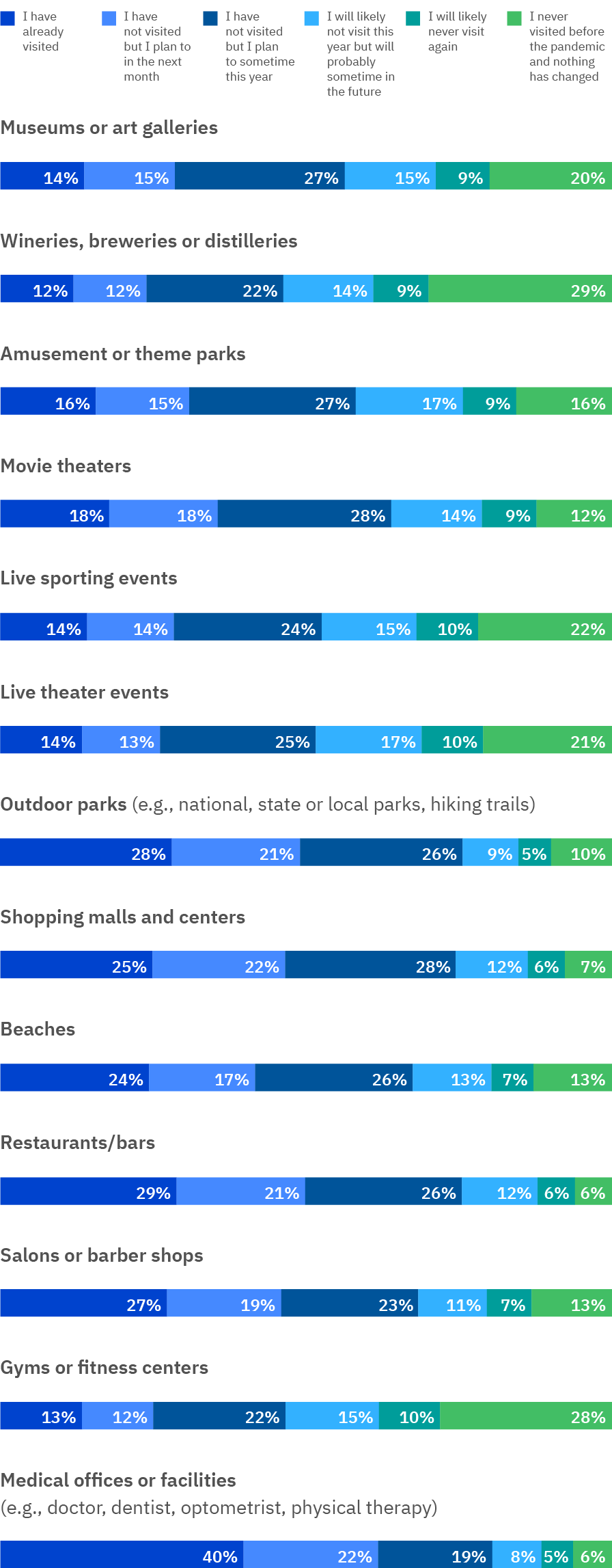People across the globe remain highly concerned about the impact of the COVID-19 pandemic on their daily lives, but there are clear differences in outlook across age groups and countries, according to the most recent findings of an ongoing IBM Institute for Business Value (IBV) study.
The survey of more than 14,500 adults across Brazil, China, Germany, India, Mexico, Spain, the United Kingdom and the United States showed that due to the pandemic individuals are making marked changes in how they work, shop and live—new habits that may not shift dramatically even once a vaccine becomes available.
“Our data tells us that many individuals are looking for more transparency and flexibility from their employers as they navigate this great uncertainty caused by the pandemic,” said Jesus Mantas, senior managing partner at IBM Services, in a news release. “Organizations need to focus on building trust with their workforce and customers, and agility to deliver solutions that meet them where they are.”
Economic recovery after COVID-19: Most people in the U.S. predict at least a few more months of uncertainty:
Global optimism remains stagnant with concerns divided among generations and countries
Consumers globally report high levels of concern about the pandemic and its impact on their lives. The overwhelming majority of global respondents said they believe we will see more pandemic events like this in the future. Sixty-nine percent of Americans surveyed expressed concern about a second wave hitting later in 2020, while in the UK, Mexico, Spain and Brazil, at least three in four respondents expressed similar views.
Seventy percent of surveyed Americans said COVID-19 has made them more concerned about the safety and health of themselves and their families, consistent with July. Eighty-eight percent of Brazilians and 54 percent of Germans surveyed agreed.
Out and about: After months of lockdown, many in the U.S. are visiting public places, despite health and safety concerns:
There is consumer optimism, however, with one-third of responding Americans who believe the U.S. economy will recover in 2021. Compared to other countries, respondents in India and China were the most optimistic about their national economies recovering in 2020.
Globally, the data suggests there is a generation gap. Consumers’ opinions about the impact of the pandemic vary widely across age groups:
- 69 percent of millennials (ages 25-39) are concerned about their job security and 60 percent said the pandemic has taken a toll on their mental health, higher than all other age groups.
- Baby Boomers (ages 55-70+) are the most pessimistic on economic recovery, with seven in ten reporting they believe their nation’s economy will continue to see an economic downturn or significant recession.
- Generation Z (ages 18-24) is the most optimistic about the economy, with more than half noting they believe the economy will recover to its pre-COVID-19 state in the next few months.
Safety first: U.S. respondents cited a variety of measures that businesses and venues should take to protect employees and patrons:
Many employees have high expectations for transparency and flexibility from their employers
In the midst of the COVID-19 pandemic, more than half (52 percent) of Americans surveyed reported that they trust their employer. At the same time, their expectations about the measures needed to feel comfortable returning to a workplace remained high across August and July. Sixty-four percent of Americans surveyed said employers need to clearly communicate what is being done to sanitize the workplace (63 percent in July), and more than half indicated interest in technology-driven solutions like systems for reserving spaces to avoid crowded ‘hot spots’ in the workplace.
Back to work? The pandemic initially seemed to increase people’s desire to work from home, but the appeal may be waning. However, most in the U.S. still indicate they would like to have the option to work remotely:
Some participating consumers seem to be feeling the fatigue of “working from home” feeling more like “living at work.” The percentage of responding Americans indicating they would like to continue to work remotely at least occasionally declined from more than 80 percent in July to 67 percent in August, and half said they wanted remote work to be their primary way of working (down 15 points from July). India had the highest percentage (33 percent) of respondents preferring to exclusively work remotely.
Roughly one in three Americans surveyed cited mental health as the number one factor affecting their preference for their future working environment; nearly half of respondents in India and Brazil agreed.
High expectations: People in the U.S. say their employers should take a broad set of actions to protect them from exposure to COVID-19:
Other U.S. findings among those surveyed:
- Skills: Nearly one in three Americans report taking more online training or education as a result of COVID-19.
- Back to school: More than half of Americans are worried that sending students back in person will lead to further outbreaks. At the same time, four in ten are concerned that their child(ren) will fall behind in their education if schools do not reopen this year. Forty-seven percent of feel strongly that their employer should provide special accommodations for childcare needs (41 percent in July).
New patterns for shopping and visiting venues in the U.S. reveal opportunities for businesses to provide options that meet consumers where they are
During the pandemic, American consumers have been experimenting with new types of shopping services and tools—even across the technological generation gap. Forty-four percent of those surveyed have tried or would like to try placing an order via mobile app (30 percent pre-pandemic), 46 percent ordering online with curbside pickup (18 percent pre-pandemic), and 30 percent virtually trying on an outfit (9 percent pre-pandemic).
Out and about after a vaccine: Museums, art galleries, amusement parks, and movie theaters could see a bigger bump in business, but gyms and fitness centers could see a more permanent decline in the U.S.:
But almost seven in ten Americans surveyed believe a COVID-19 vaccine will not be available until 2021 or later, and even when a vaccine is available, many consumers are not sure if they will be comfortable visiting many types of venues. Only 27 percent will definitely visit a shopping mall once a vaccine is available, 21 percent a movie theater and 18 percent a live sporting event.
The IBV has surveyed more than 68,000 consumers since April and plans to continue polling the public in the months ahead. Later this fall, the IBV plans to release a report examining how more than 3,500 C-Suite executives globally are transforming their business to survive and thrive in the new normal across industries such as banking, retail, healthcare and technology.


